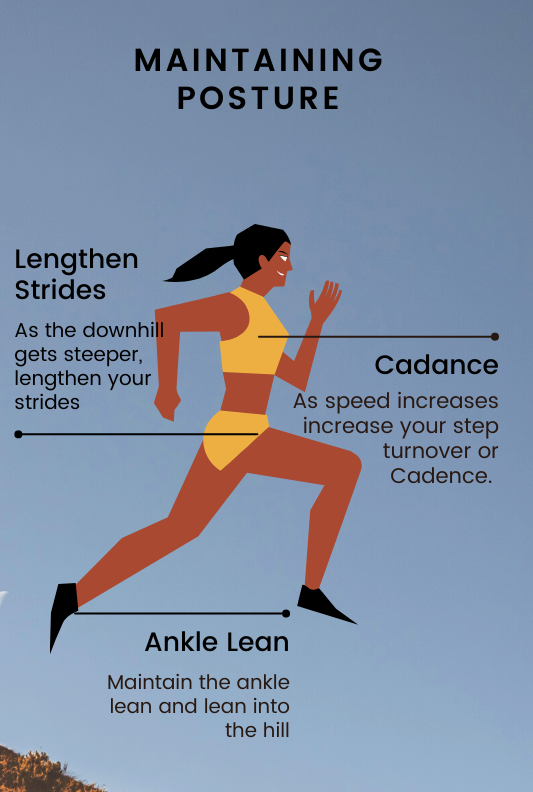Coping with the Ups and Downs of Running. . . Literally!
By Brianna Delaney
PART II
Much like running uphill there is a technique to running downhill. Those ‘race the wind’ moments from cross country were either a really nice speedy way to catch up or a barely controlled downhill fall. Easing in and out of decline sections can help our overall performance on runs, especially race days, by providing more consistency from start to finish.
Downhill
Now you’ve made it up the hill, maintained your rhythm and you’re approaching the downhill. Is it time to race the wind?! ‘A break’ he cries! Not quite! As much as we have to exercise restraint and focus on the rhythm going up hills we have to do the same going downhill.
In the same way we tend to lean too far forward going up, a common mistake going downhill is to lean too far back. Shifting weight backwards causes us to land further onto our heels and increases the breaking forces. Increased ground reaction forces also put a lot of pressure on our joints and muscles. Leaning back is a natural way to slow down and stop, however, if we are able to maintain the rhythm the added speed is an advantage.
Contrary to the natural feeling, try to stay upright and ‘lean into’ the hill while maintaining that natural ankle lean. To continue to maintain that rhythm, start to lengthen out your stride as the downhill gets steeper. As your speed increases you will need to also increase your step turnover or cadence, this helps keep your feet under you and will help those with a tendency to overstride or who suffer from shin-splints.
As we approach the downhill, start to lengthen your strides and let your speed build, then slowly adjust your step turnover rather than overstriding. Continue to land on the mid or forefoot but try to bend the knee just slightly to reduce the impact on joints and muscles. Allow your arms to drift a little wider than usual and more rotation through your torso to balance, maintaining your upright posture and ankle lean. At any point where you feel as though you’re going too fast or losing control, rather than leaning back to slow down, try shortening your strides a little at a time. Once you are back in the driver's seat, enjoy!
Equal Effort
Unless you have a running program that includes sprints, intervals or other changing parameters, a steady state run should focus on the single goal of maintaining effort. Over Part I and II we have covered the techniques that will best help you approach any change in incline across a run, but the true aim is to even out the effort required from start to finish. Ultimately, running should only require slightly more effort going uphill than running on even surfaces and slightly less when running downhill.
As you may have picked up, a key way to manage this is rhythm or cadence. Cadence is the amount of steps taken in a minute and important to a lot of high level runners or those experiencing overuse injuries. You can measure yours by counting the amount of steps taken in a minute in a straight line (flat surface!) or many sport watches track this. Keeping it as even as possible can be as simple as altering your stride to the needs of the incline or decline, much like shifting up and down gears on a bike. If you need a cue to help, counting your steps or some run playlists are designed around a number of beats-per-minute, run to the beat!
Varying our terrain and being able to feel confident in running unfamiliar routes is a great benefit to the overall experience of running. Hills particularly have their own benefits in improving speed, strength and coordination and while you don’t have to be doing hill sprints every week, feeling confident in tackling them will aid your running journey!



